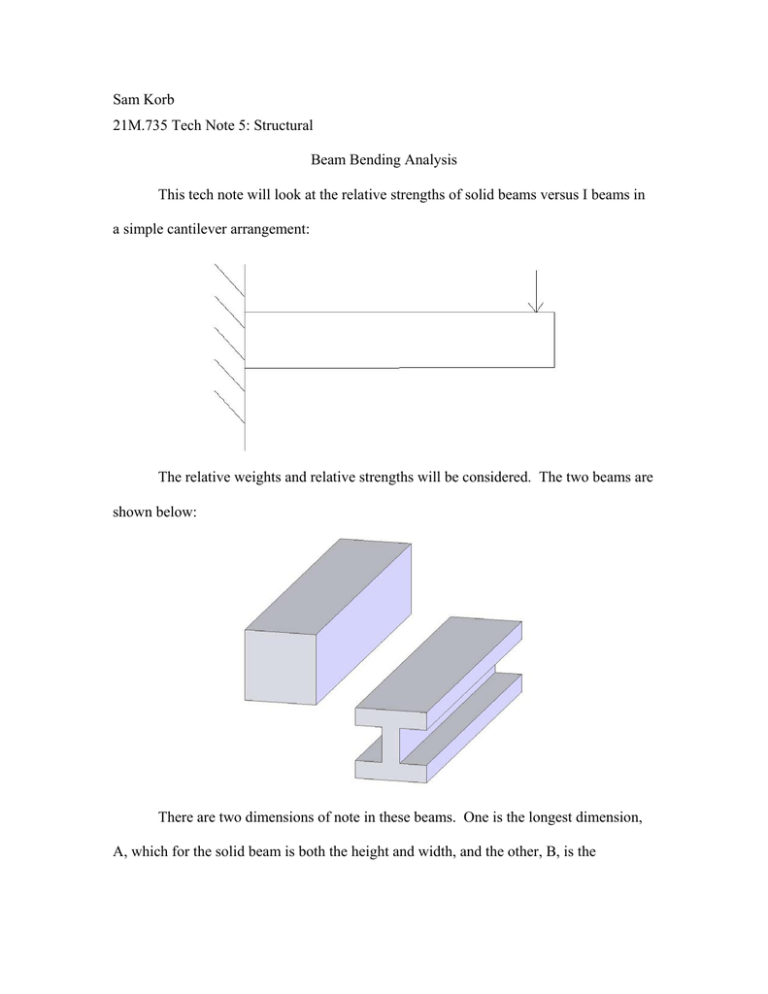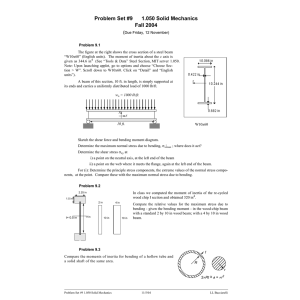Sam Korb 21M.735 Tech Note 5: Structural Beam Bending Analysis
advertisement

Sam Korb 21M.735 Tech Note 5: Structural Beam Bending Analysis This tech note will look at the relative strengths of solid beams versus I beams in a simple cantilever arrangement: The relative weights and relative strengths will be considered. The two beams are shown below: There are two dimensions of note in these beams. One is the longest dimension, A, which for the solid beam is both the height and width, and the other, B, is the thickness of the I beam members. For this analysis, only an I beam with constant cross section will be considered: The first thing to compute is the moment of inertia of both beams. The equation for the moment of inertia I of a rectangle is: I= b * h 3 12 where b is the width, and h is the height. For the I beam, it can be considered to have the equivalent moment of inertial to the solid beam, minus the moment of inertia of the cut- out. Thus the moments of inertia for the beams are: I Solid I I −beam = A 4 = 12 A 4 − ( A − B )( A − 2B) 3 7 A 3 B − 18 A 2 B 2 + 20 AB 3 − 8B 4 = 12 12 To further simplify analysis, the quantity B will be expressed as a fraction of A, that is: B = k*A. The deflection of the tip of a cantilevered beam when under a point force loading at its tip is given as: δ= WL3 3EI Thus, all other factors being equal, the deflection is inversely related to the moment of inertia. The ratio of the inertias of the two configurations is: I I − Beam 3 = 1 − (1 − k )(1 − 2k ) I Solid The other comparison factor of interest is the relative weights of the two beams. The weight is given by: Weight = ρ *Volume where V is the volume. The ratio of the two weights is then: W I − Beam = 1 − (1 − k )(1 − 2k ) = k (3 − 2k ) WSolid Plugging in some approximate numbers, try k = .25. In this case, the ratio of the moments of inertia will be .90625. The ratio of the weights will be .625. Thus, for a reduction of almost 40% of the weight, there is only a 10% reduction in bending stiffness. This demonstrates the desirability of I-Beams, and helps to quantify the benefits versus the costs. References: http://pergatory.mit.edu/2.007/handouts/bending/bending.pdf http://www.engineersedge.com/beam_bending/beam_bending10.htm




